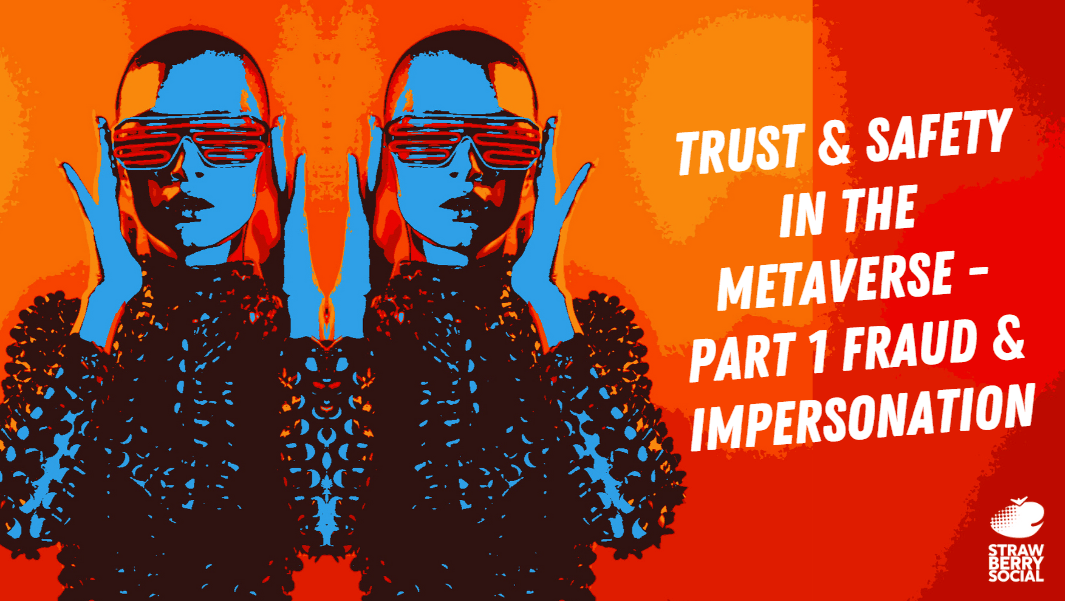In Part One of our new blog series on the Metaverse, we’re going to focus on two industries that are extremely vulnerable to fraud and impersonation: the financial industry (Fintech) and the medical (physical and mental) industry.
Cybersecurity firm Check Point reported a 50% increase in overall attacks per week on corporate networks in 2021 compared to a year earlier. It might surprise you to know that:
- Ransom attacks on organisations happen almost every day, and
Cryptocurrency (THE method of currency in Web 3.0) fraud continues to happen due to shady investment practices and scam artists.
This clearly raises a lot of red flags as most of us rely on our online transactions (be they personal, or financial) to be secure and confidential; we place a lot of trust in both the institutions, as well as the individuals working with the institutions.
The problem is – any virtual transactions can be vulnerable to attack. For example, some traditional banking institutions have even been caught illegally signing customers up for accounts in order to increase profits.
How to Avoid Fraud in the Metaverse
Currently Web 3.0 developers are proposing to decentralise financial transactions as a means to remove the potential for fraudulent behaviour (by putting full safety and control in the hands of the end-user).
Allowing the individual to control their security and finances sounds like the dream; but reality is, not everyone plays by the same rules of engagement and just one bad scheme can throw off the entire ecosystem. And so, even cryptocurrency exchanges don’t come without safety risks. Virtually every conversation, every article about decentralisation of finances that I’ve seen, pose the same question:
“How do we remove the potential for easy scams, and get people to trust us and understand the system?”

Similarly, the medical industry has taken big strides towards digital presence for both physical and mental health. Some traditional in-person services are now easily treated by speaking with a professional online.
Nevertheless, patient privacy and medical confidentiality continues to be a serious concern. Hackers have already found ways to infiltrate medical records and share extremely private patient information; so how easy will it be for a scammer to uncover patient login details, impersonate their avatar in the Metaverse, then fool the doctor during private sessions? How easy will it be for a therapist’s account to get hacked and impersonate them to a patient? Anonymity is a wonderful tool but there needs to be a real solution to the above challenges.
So what does all of this have to do with your organisation? If we’re all going to be using the Metaverse in the future, then every organisation will need to be prepared to tackle issues such as the above. If your organisation is looking to buy up some space in the Metaverse, here is a good set of questions to ask yourself (and your company), before venturing into the space:
- What tools have we put in place to ensure our customer’s information will remain confidential? Are we in position to produce our own proprietary technology? Who will monitor this technology and will it need to follow traditional regulatory policy?
- How much responsibility for this confidentiality are we putting on the end user to keep their information confidential? Decentralisation is the buzzword for data protection in Web3.0 – are we prepared to help our customers understand how to protect their information?
- Do current policies exist that we can adapt and adopt in Web 3.0? There will need to be some regulatory policy in Web3.0 – so what can we adopt and adapt from Web2.0? Customers may already trust and understand these policies which is an added bonus, creating a shorter barrier to entry.
- How are we communicating to our users? Who is in place to help build trust and explain clearly how users’ information is protected? Have we created a strong moderation support team to support us and help clarify our safety policies in a clear and easy to understand manner?
- Are there any organisations which can help us bridge the trust gap, and how will that work? Trust and Safety Agencies, such as StrawberrySocial, are already primed to work with your customers and you – on ways to a) understand how you’re protecting them and b) communicate it outward, thereby building that much-needed trust.
The metaverse is coming at us at break-neck speed, which in many ways is wonderful to watch. The benefits will likely far outweigh the challenges, but we should learn from past mistakes and use what we know to avoid problems like scammers, fraud and impersonation.




 October 24, 2022
October 24, 2022  Share This Post
Share This Post